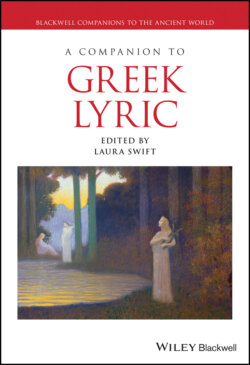Читать книгу A Companion to Greek Lyric - Группа авторов - Страница 68
Introduction
ОглавлениеThe study of Greek lyric poetry has always been limited by the state of the extant corpus. Not only does it consist primarily of fragments, but apart from four books of Pindaric epinician and the elegies attributed to Theognis, it was until recently also transmitted indirectly, i.e., via quotations in sources such as Athenaeus, Stobaeus, or the scholia to other works (Phillips, this volume). But with the dawn of papyrology, which emerged as a discipline in its own right toward the end of the nineteenth century, a new era was ushered in. Although only a small number of the upwards of a million papyrus fragments recovered from the sands of Egypt preserve lyric poetry, and although many of those fragments are rather scanty, they nonetheless provide ancient witnesses to textual traditions that do not otherwise survive, frequently shedding light on the work of Alexandrian scholars. More often than not, they challenge received wisdom and long-held dogma: thanks to papyrology, the poetic output of Timotheus, Bacchylides, Alcman, Sappho, Stesichorus, Simonides, and Archilochus (to name a few) is understood more richly today than at any point since antiquity.
The corpus of Greek lyric remains meager and frustratingly incomplete, but papyri have added considerably to it, and because of the staggering amount of unpublished material, further additions may await discovery—especially in the largest institutional collections. Relatively few students and scholars of lyric will ever have to edit a papyrus, but even making use of these texts, fragmentary and riddled with specialized symbols, can be intimidating. This chapter therefore endeavors to provide a wide-ranging and demystifying introduction.
